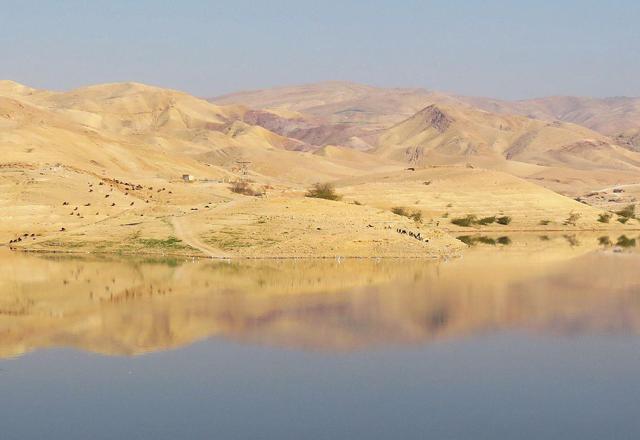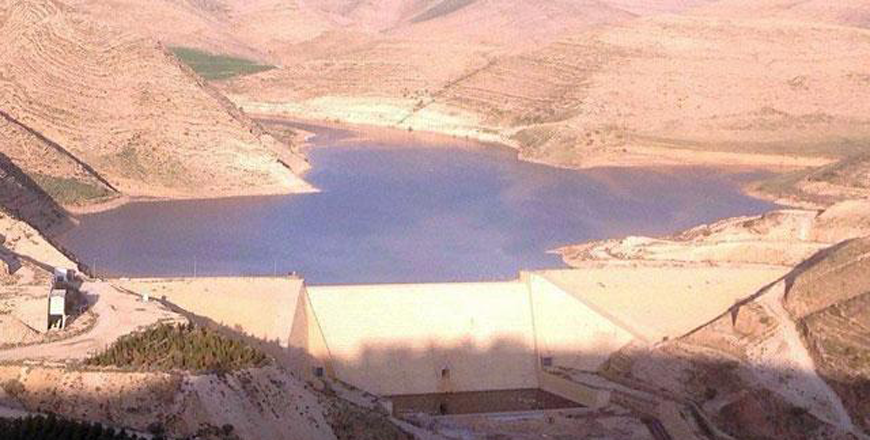You are here
Dutch, US experts team up to replenish water sources
By Batool Ghaith - Nov 03,2021 - Last updated at Nov 04,2021

A view of Lake Kafrein in the Jordan Valley (Photo courtesy of HydrologyNL)
AMMAN — Experts from The Netherlands, Jordan and the US teamed up to find possible solutions for climate change adaptation, and options to increase the amount of available water, according to Hydrology NL, a Dutch institute working on water resources internationally.
HydrologyNL cooperated with the Ministry of Water and Irrigation and the National Centre for Research and Development (NCRD), the Higher Council for Science and Technology/the University of Jordan, and the US Geological Survey, as they delivered the final report on allocation of potential infrastructure for groundwater recharge in Jordan. This report included the training of PhD students and postdoctoral researchers, according to the institute.
Michael van der Valk, a senior hydrologist and director of HydrologyNL in the Netherlands, was responsible for the regional mapping and scientific backstopping for the USAID-funded project, covering almost all parts of Jordan except for the south and far northeast.
The project seeks to promote regional cooperation and to assist Jordan with solving water scarcity issues by accelerating the use of managed aquifer recharge, according to the Dutch institute.
“The project was launched four years ago and has recently finished, the final report is out since September, and all data is available. Currently, groundwater levels are going down all over Jordan,” Van der Valk told The Jordan Times in an e-mail interview.
Van der Valk noted that if implementation of managed aquifer recharge is implemented, the groundwater will be replenished and groundwater levels will rise, at least locally and temporarily.
“More groundwater will be available during the dry season, for example for irrigation or drinking water. So, we obtain increased resilience against the impacts of climate change,” he said.
Van der Valk highlighted that the storage of groundwater is a low-cost, low-energy water supply option, with virtually no loss of water by evaporation, and no algae or mosquitoes.
“During the wet season, especially during heavy rainfall, there is quite some water loss, but when we capture this water just before it is lost, we can infiltrate it and add it to the groundwater. The extra groundwater can then be used months later in the dry season,” Van der Valk added.
He said that they have used more than 30 years of daily rainfall data from satellite images to estimate the differences in water availability and to map the potential locations for groundwater recharge projects.
The Jordanian team was led by Elias Salameh, a professor at the University of Jordan.
Salameh noted that the Nabataeans already built systems to infiltrate surplus river water as part of their flood protection.
“We can find them around Petra and in the Badia,” he said in a statement sent to the Jordan Times.
“Most of the water arrives where the wadis leave the mountains and enter the Ghor of the Jordan Valley, which is where the geological situation would allow for infiltration, for example in former gravel pits,” Salameh said.
Fieldwork will be the next step, including a more in-depth analysis of the rainfall dataset, as the first analysis already showed regional changes, according to Van der Valk.
“We witnessed an extreme increase in the south, with both longer droughts and more intense rainfall. The latter leads to a higher risk for floods, which is something that we hope to look into in the near future,” Van der Valk noted.
“The project in Jordan serves as an example for other countries, especially in the MENA region,” he added.
Related Articles
AMMAN — Jordan grapples with water scarcity, which is interconnected between rainfall and groundwater levels.
Jordan and Saudi Arabia have signed an agreement governing “sound management and protection of the shared Disi aquifer”, which supplies the capital and other governorates with a quarter of their water needs, according to government officials.
AMMAN — Rain over the weekend channelled 5 million cubic metres (mcm) of water into the Kingdom’s 14 major dams, raising storage levels to 3
















